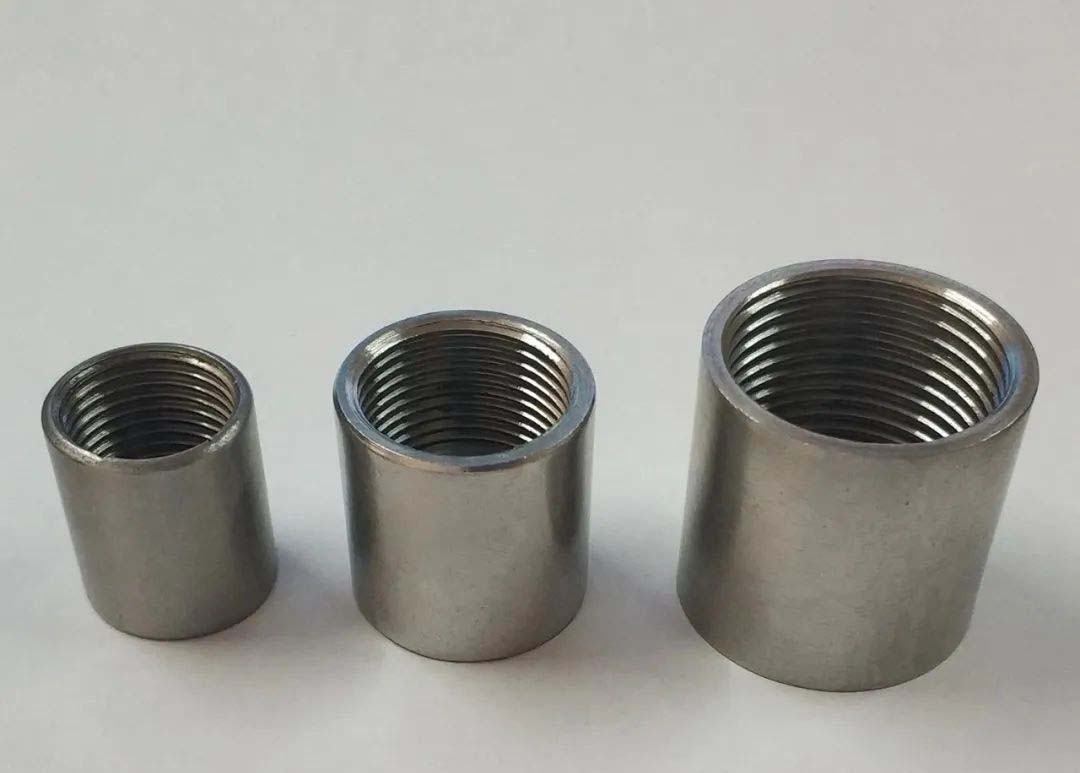A Comprehensive Analysis of Pipe Hoop Accessories: Differences and Applications of Pipe Couplings, Pipe Clamps, Pipe Hangers, and Hose Clamps
2025-06-10 10:35:26 hits:0
In the field of pipeline engineering, terms such as "pipe couplings, pipe clamps, pipe hangers, and hose clamps" are often confused due to their similar names.
As a supplier of ductile iron pipes and related accessories, Tiegu combines our production and sales experience to provide a comprehensive analysis of these pipe hoop accessories for industry users.
This article analyzes the differences among these four types of accessories from the aspects of structure, pressure rating, and application scenarios, supplemented by comparison tables and selection guidelines, helping you understand the distinctions and applications of pipe couplings, pipe clamps, pipe hangers, and hose clamps.
1. Pipe Couplings: Threaded Pipe Extenders
Definition:
Narrowly defined, pipe couplings are tubular fittings with internal threads at both ends, used for end-to-end connection of two pipes to achieve length extension or same-diameter butt joint. Broadly speaking, pipe couplings are often used as a general term for pipeline connection fittings.
![Actual photo of internal threaded pipe coupling, with internal threads at both ends, used for end-to-end pipe connection to achieve extension or same-diameter butt joint. Material: [specific material such as galvanized steel/stainless steel], suitable for medium and high-pressure pipe connection scenarios. Actual photo of internal threaded pipe coupling, with internal threads at both ends, used for end-to-end pipe connection to achieve extension or same-diameter butt joint. Material: [specific material such as galvanized steel/stainless steel], suitable for medium and high-pressure pipe connection scenarios.](https://www.tieguexport.com/uploadfile/ueditor/image/202506/1749524047c5f5f8.jpg)
Working Principle:
Connect two pipes end to end through threading or welding to ensure pipeline continuity and sealing.
Core Characteristics
Item | Features |
Connection Method | Internal thread screwing (for galvanized steel pipes) / welding (for stainless steel pipes) |
Sealing Performance | Strong, suitable for medium to high-pressure (1 - 10MPa) scenarios (gas, fire protection) |
Disassembly Difficulty | Requires wrenches, may damage threads |
Materials | Galvanized steel, stainless steel |
Application Scenarios | Pipe extension, plumbing pipe docking, gas pipeline sealing connection |
Note:
In daily language, "pipe couplings" are sometimes used as a generic term referring to various ring-shaped accessories for pipeline connection or fixation. In this case, pipe clamps, hose clamps, and pipe hangers are all generally classified as "pipe couplings" because they all serve to fix or connect pipes. However, in the engineering field, the narrow definition must be strictly distinguished to avoid confusion.
2. Pipe Clamps: Quick Connectors for Grooved Pipelines
Definition:
Pipe clamps are ring-shaped metal fixing devices that achieve clamping connections through structures such as bolts, latches, or steel wires. They are widely used for the quick installation, repair, or fixation of pipes, pipe fittings, or valves, especially in grooved pipeline systems.
![Actual photo of [wire pipe clamp/cast iron pipe clamp], with a ring-shaped metal structure, equipped with bolts/steel wires for tightening, and an internal rubber sealing ring, used for the quick connection of grooved pipelines. Suitable for [low-pressure scenarios such as fire-fighting water, drainage systems, or indicate the applicable pipe diameter range]. Actual photo of [wire pipe clamp/cast iron pipe clamp], with a ring-shaped metal structure, equipped with bolts/steel wires for tightening, and an internal rubber sealing ring, used for the quick connection of grooved pipelines. Suitable for [low-pressure scenarios such as fire-fighting water, drainage systems, or indicate the applicable pipe diameter range].](https://www.tieguexport.com/uploadfile/ueditor/image/202506/1749524099c9dab4.jpg)
Working Principle:
The pipe clamp wraps around the connection part with its ring-shaped structure. When the bolt or latch is tightened, the internal rubber sealing washer is compressed, thus forming a good seal and fixation with the pipeline surface.
Core Characteristics
Item | Features |
Structure | Metal shell + rubber sealing ring, tightened by bolts/steel wires |
Installation Efficiency | Completed within 5 minutes, 3 times faster than threaded connections (suitable for emergency construction) |
Sealing Performance | Moderate, suitable for low-pressure (≤1MPa) scenarios (fire-fighting water, drainage) |
Detachability | Repeatedly detachable, suitable for maintenance or temporary connections |
Types
According to different materials and structures, pipe clamps can be divided into two main categories: wire pipe clamps and cast iron pipe clamps.
Wire Pipe Clamps: Made of elastic steel wire, with a diameter of φ10 - φ50mm, suitable for connecting small-diameter pipes such as hoses, featuring a simple structure and easy installation.
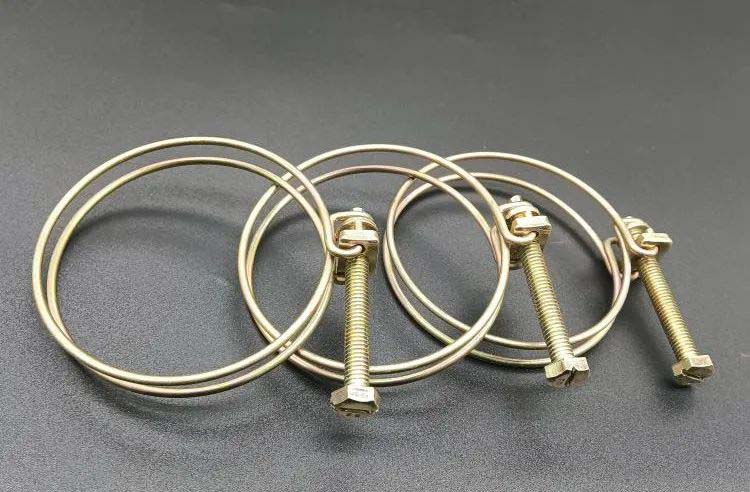
Cast Iron Pipe Clamps: Made of ductile iron, with a diameter of φ100 - φ600mm, commonly used as grooved connectors for medium to large-diameter pipes (such as fire-fighting pipes), with good sealing and pressure-bearing capacity.
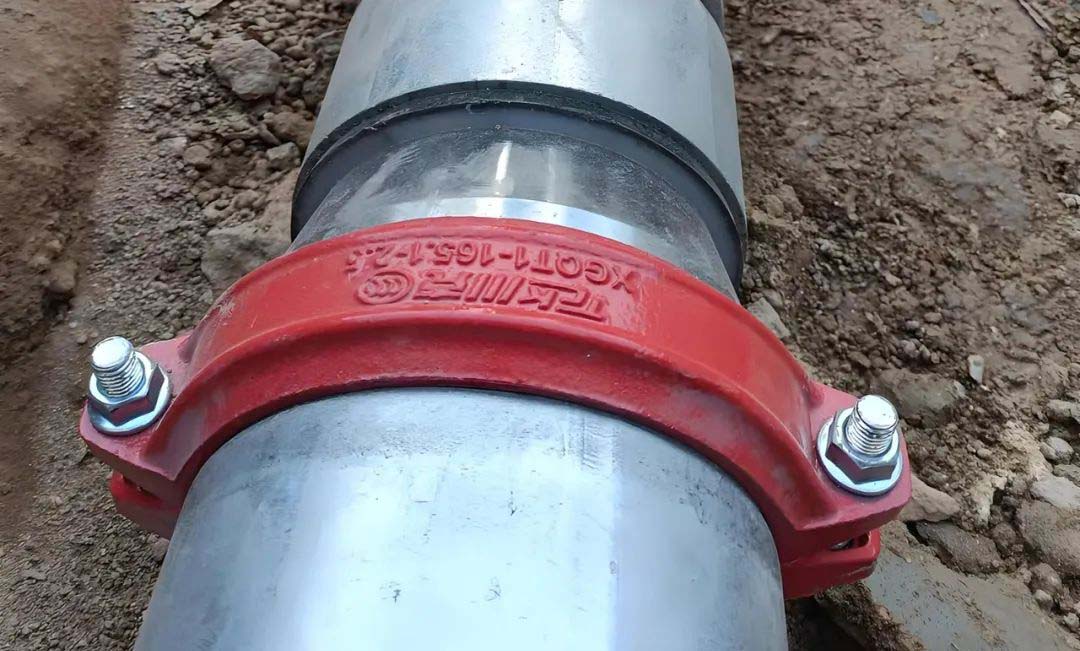
Application Scenarios
Mainly used for connecting grooved pipe fittings, quickly repairing rigid pipes, and fixing pipes in fire protection, water supply and drainage, and industrial pipelines.
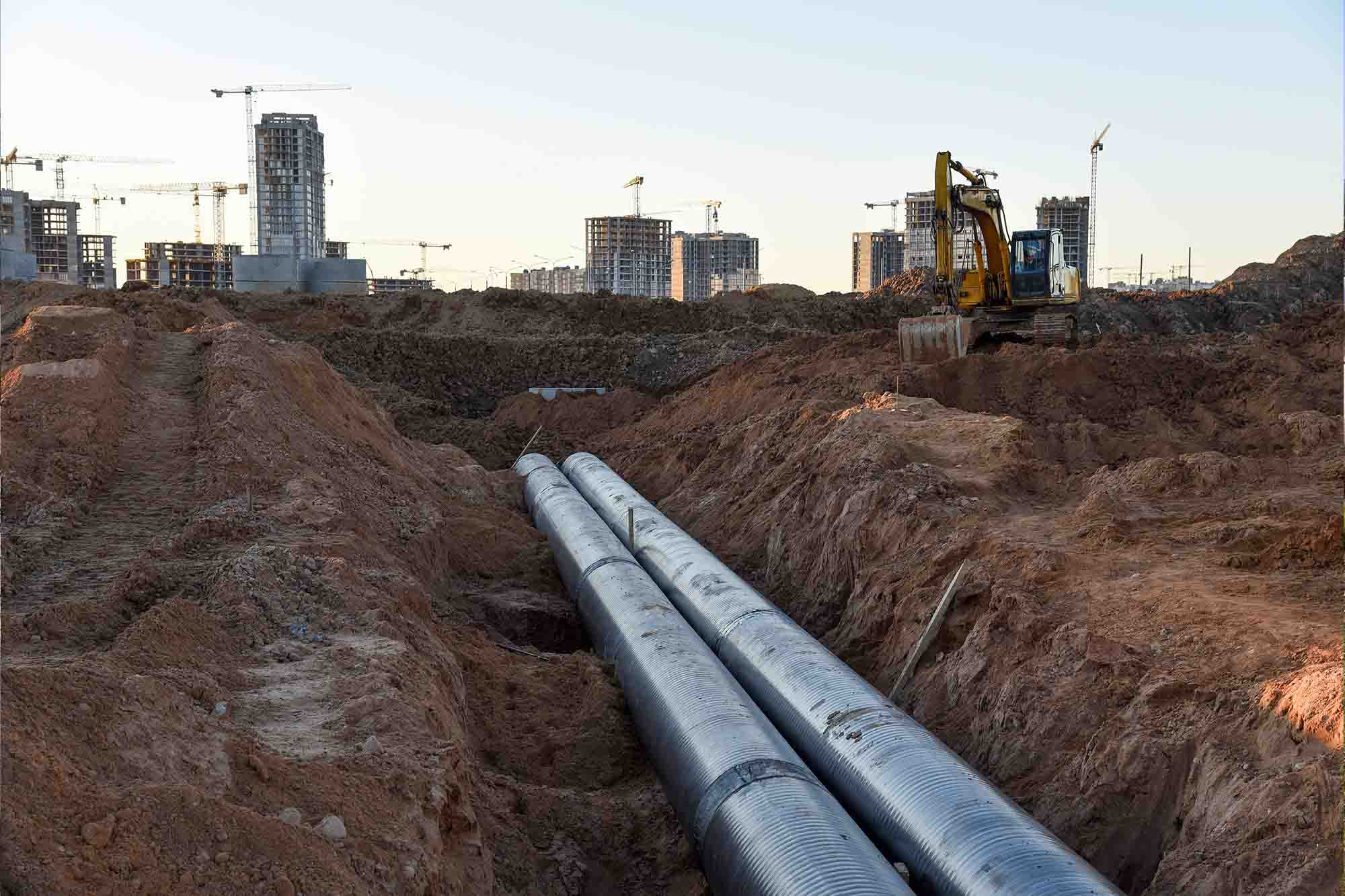
3. Pipe Hangers: Pipe Support and Fixation Components
Definition:
Pipe hangers are ring-shaped or semi-ring-shaped metal components, mainly used to fix pipes to walls, brackets, or hangers, achieving functions such as support, stabilization, and positioning. They are important auxiliary fixing components in pipeline installation.
![Actual photo of [U-shaped pipe hanger/circular pipe hanger/Ω-shaped pipe hanger], in [corresponding shape], made of [materials such as hot-dip galvanized steel/stainless steel], used to fix pipes to walls, brackets, or hangers, playing the roles of support, stabilization, and positioning. Application scenarios can be indicated, such as fixing vertical pipes in high-rise buildings in construction engineering. Actual photo of [U-shaped pipe hanger/circular pipe hanger/Ω-shaped pipe hanger], in [corresponding shape], made of [materials such as hot-dip galvanized steel/stainless steel], used to fix pipes to walls, brackets, or hangers, playing the roles of support, stabilization, and positioning. Application scenarios can be indicated, such as fixing vertical pipes in high-rise buildings in construction engineering.](https://www.tieguexport.com/uploadfile/ueditor/image/202506/1749524173811d0c.jpg)
Working Principle:
The pipe hanger wraps around the pipe with a ring-shaped or U-shaped structure, and is fixed to the predetermined surface (such as walls or brackets) with bolts or screws, applying a clamping force to ensure the stability of the pipe.
Core Characteristics
Item | Features |
Function | Load-bearing support (for steel pipes with DN200+), seismic positioning (for pipeline fixation in seismic zones) |
Structure | U-shaped (single-bolt), Ω-shaped (adjustable opening), circular (two-piece cladding) |
Installation | Fixed with expansion bolts / welding, pre-drilling required |
Materials | Hot-dip galvanized steel (anti-corrosion), stainless steel (for high-humidity environments) |
Prohibited Scenarios | Substituting for pipe couplings/pipe clamps in pipeline sealing connections |
Common Types
U-shaped Pipe Hangers: Shaped like U-bolts, commonly used for fixing round pipes.
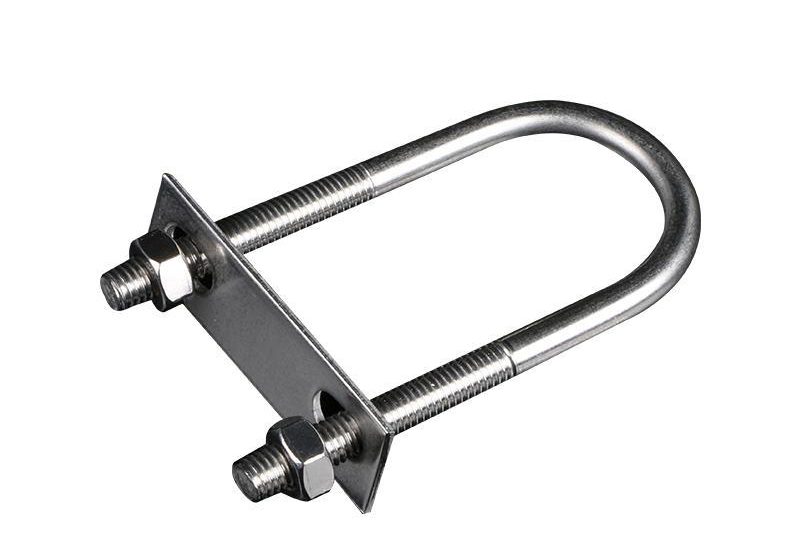
Circular/Ring-shaped Pipe Hangers: Mostly two-piece structures, with cladding-type ring clamping.

Ω-shaped/Saddle-shaped Pipe Hangers: Open design, suitable for simple fixation.
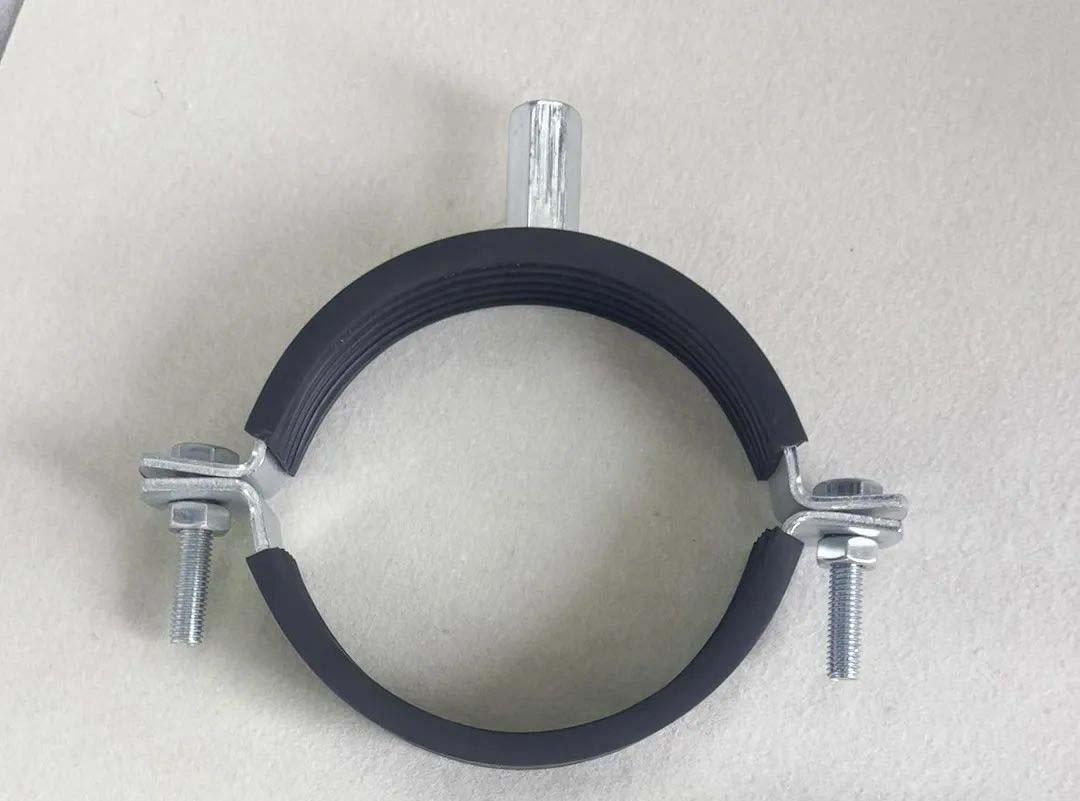
Application Scenarios
Construction Engineering: Fixing vertical pipes in high-rise buildings (such as DN150 drainage pipes).
Industrial Pipelines: Supporting chemical pipelines, limiting thermal expansion of steam pipelines.
Municipal Engineering: Seismic pipe hangers for buried pipelines, pipe hangers for bridges.
4. Hose Clamps: Specialized Fixing Components for Hoses
Definition:
Hose clamps are adjustable straps that fix the connection between hoses and rigid pipes by tightening bolts or nuts.
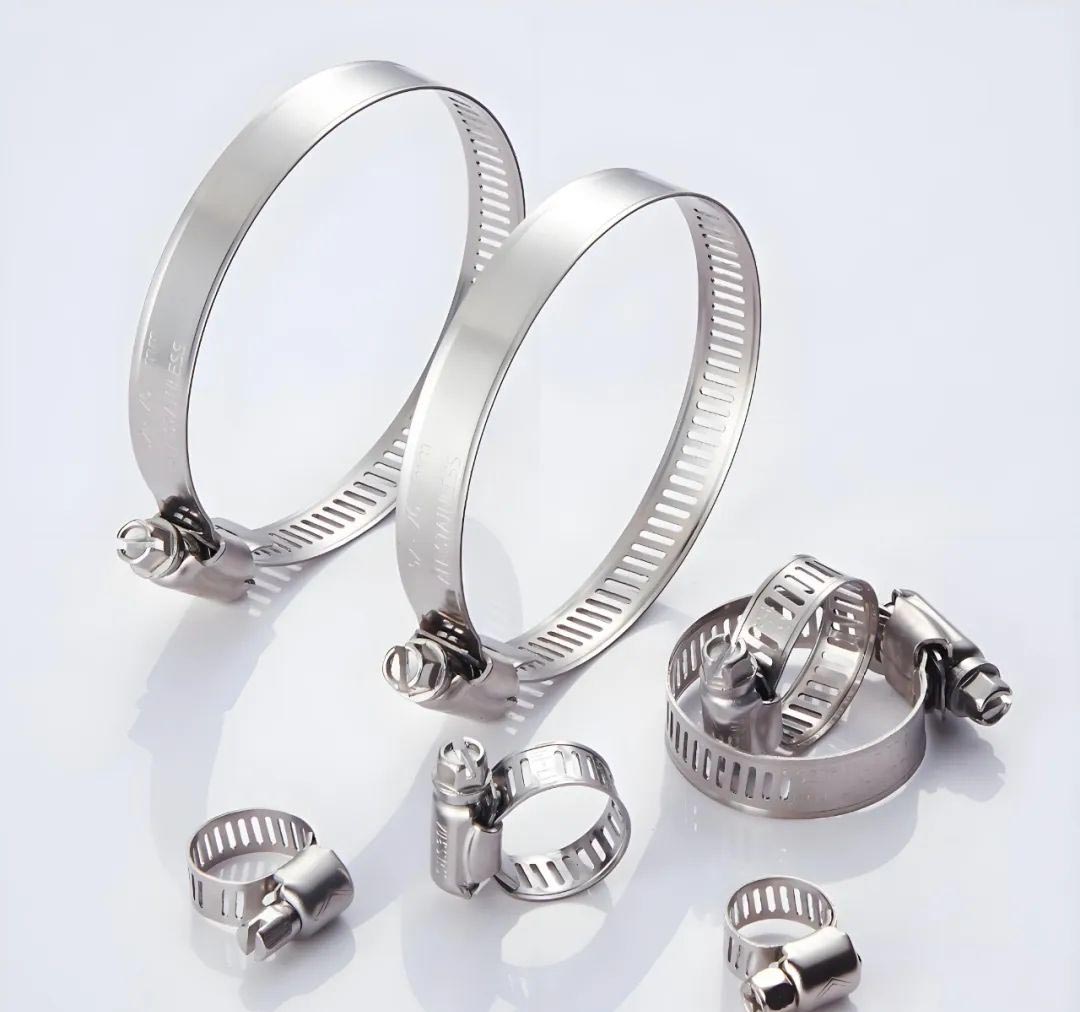
Working Principle:
Hose clamps adjust the tightness of the ring-shaped metal band through screws, tightly wrapping the hose and applying uniform pressure to make the hose fit closely with the joint, preventing leakage or loosening.
Core Characteristics
Item | Features |
Structure | Narrow band design (6 - 12mm wide), suitable for hoses with a diameter of φ10 - 100mm |
Tightening Method | Screw type (manual adjustment), spring type (automatically compensates for thermal expansion and contraction) |
Sealing Performance | Low-pressure (≤0.5MPa), relying on uniform pressure |
Materials | Stainless steel (for automotive fuel lines), galvanized steel (for household water pipes) |
Common Types
American-style Hose Clamps: Narrow bands, suitable for small-diameter pipes.
German-style Hose Clamps: Even force distribution, suitable for high-pressure applications.
T-shaped Hose Clamps: High pressure-bearing capacity, suitable for large-diameter pipes.
Spring-type Hose Clamps: Automatically adjust using elastic tension, adaptable to thermal expansion and contraction.
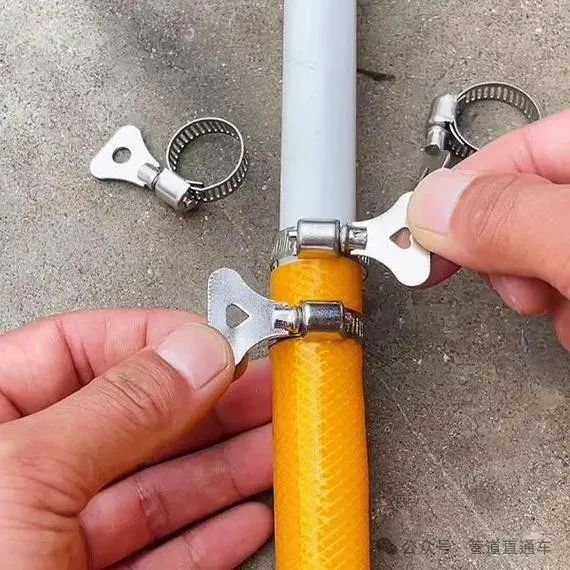
Application Scenarios
Connecting household water hoses (such as washing machine inlet hoses).
Connecting hoses for automotive fuel and water systems.
Quick fixing of industrial hoses (such as air, water, and oil hoses).
5. Comparison Table: Clarifying the Four Types of "Hoops" at a Glance
Type | Core Function | Pressure Rating | Installation Tool | Typical Pipe Diameter | Materials | Representative Scenarios |
Pipe Couplings | Pipeline sealing connection | Medium to high-pressure (1 - 10MPa) | Wrenches | DN15 - DN100 | Galvanized steel/stainless steel | Gas pipelines, fire protection risers |
Pipe Clamps | Quick connection for grooved pipelines | Low-pressure (≤1MPa) | Screwdrivers | DN50 - DN600 | Cast iron/wire | Fire hoses, drainage pipes |
Pipe Hangers | Pipeline support/positioning | Non-pressure-bearing | Drills/wrenches | DN50 - DN2000 | Hot-dip galvanized steel | Bridge pipe supports, vertical pipe fixation |
Hose Clamps | Fixing hoses to rigid pipes | Low-pressure (≤0.5MPa) | Screwdrivers | φ10 - φ100mm | Stainless steel/galvanized steel | Automotive hoses, household water pipes |
6. Practical Selection Suggestions
Choose pipe couplings for sealing priority: For medium to high-pressure scenarios (gas, industrial fluids), select threaded/welded pipe couplings.
Use pipe clamps for emergency repairs: For grooved pipelines or temporary connections, choose cast iron/wire pipe clamps.
Select pipe hangers for load-bearing and fixation: For large-diameter pipes (DN200+) or seismic scenarios, use U-shaped/circular pipe hangers.
Use hose clamps for hose connections: Select the corresponding type according to the pipe diameter and pressure (such as spring-type hose clamps for automotive applications).
The classifications in this article are based on engineering practices. For specific selection advice, it is recommended to consult professional technicians according to the working conditions. If you want to learn more about application cases of "pipe couplings, pipe clamps, pipe hangers, and hose clamps", feel free to leave a comment and discuss!
This article is a knowledge popularization and experience sharing content, aiming to help readers clearly understand the relevant knowledge of pipeline clamp fittings. Some of the images are sourced from the internet. If there is any infringement, please contact us and we will delete them as soon as possible. Thank you for your support.

 en
en  fra
fra  de
de  ru
ru  ara
ara  gle
gle  it
it  jp
jp  kor
kor  th
th  zh
zh 